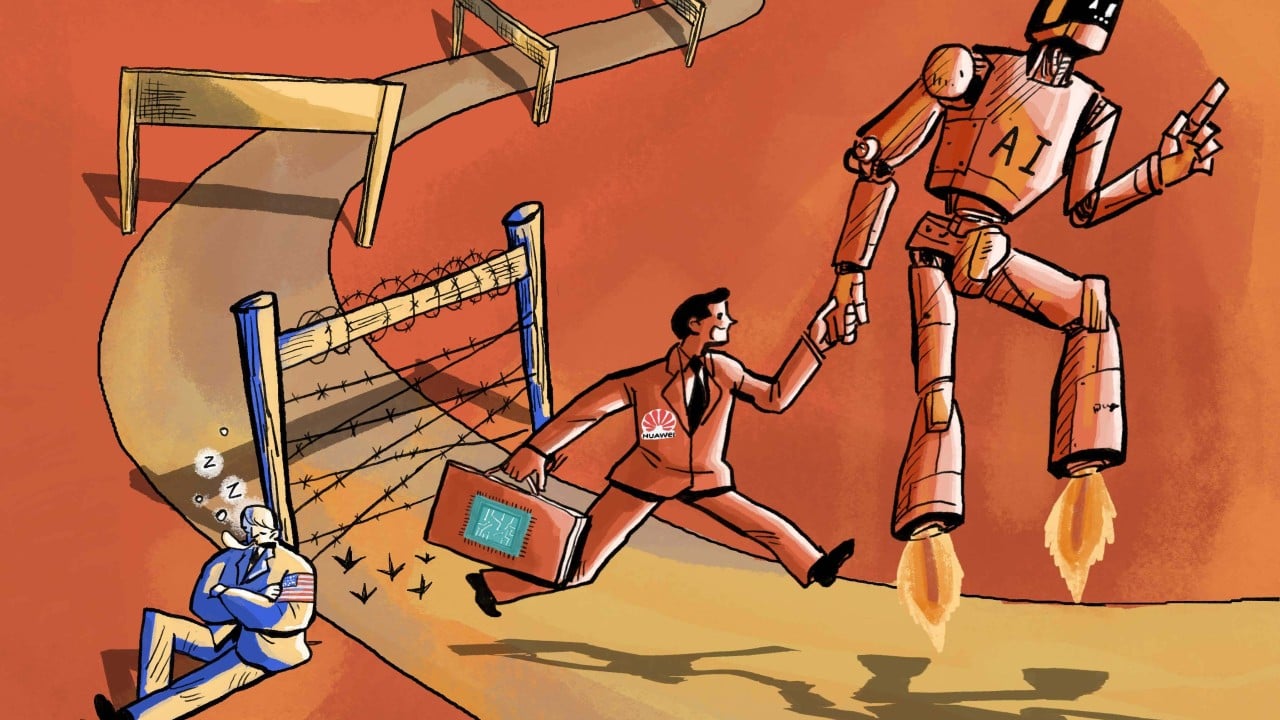About three months after Huawei Technologies was added to Washington’s trade blacklist in 2019, the company’s then-rotating chairman, Eric Xu Zhijun, unveiled what he proclaimed as the “world’s most powerful AI processor” – the Ascend 910 – designed for training artificial intelligence (AI) models.
Advertisement
Huawei’s advanced AI chip initiative, however, suddenly faced a major obstacle a year later in August 2020, when the US Commerce Department tightened restrictions by barring the sale of semiconductor products and services – sourced from anywhere with US technology – to the company and its affiliates without a requisite licence.
As a result, Huawei supplier Taiwan Semiconductor Manufacturing Co, the world’s largest and most advanced contract chipmaker, ceased doing business with the Chinese firm and its integrated circuit (IC) design unit HiSilicon to comply with US curbs.
At the time, the prognosis appeared dire for Huawei, according to some analysts. “If enough companies comply globally, Huawei’s ability to generate workarounds will be severely undercut, putting its continued existence as a viable commercial entity in doubt,” said Paul Trolio of New York-based political risk consultancy Eurasia Group.
Fast-forward to 2025, and Huawei has remained resilient in the face of US sanctions.

Jensen Huang, founder and CEO of AI chip giant Nvidia, has been the most prominent industry leader to recognise the resurgence of Huawei in the IC sector.
Advertisement

